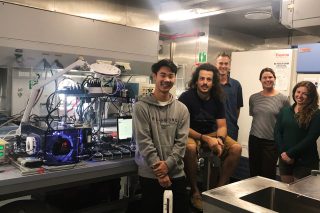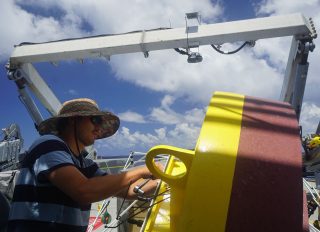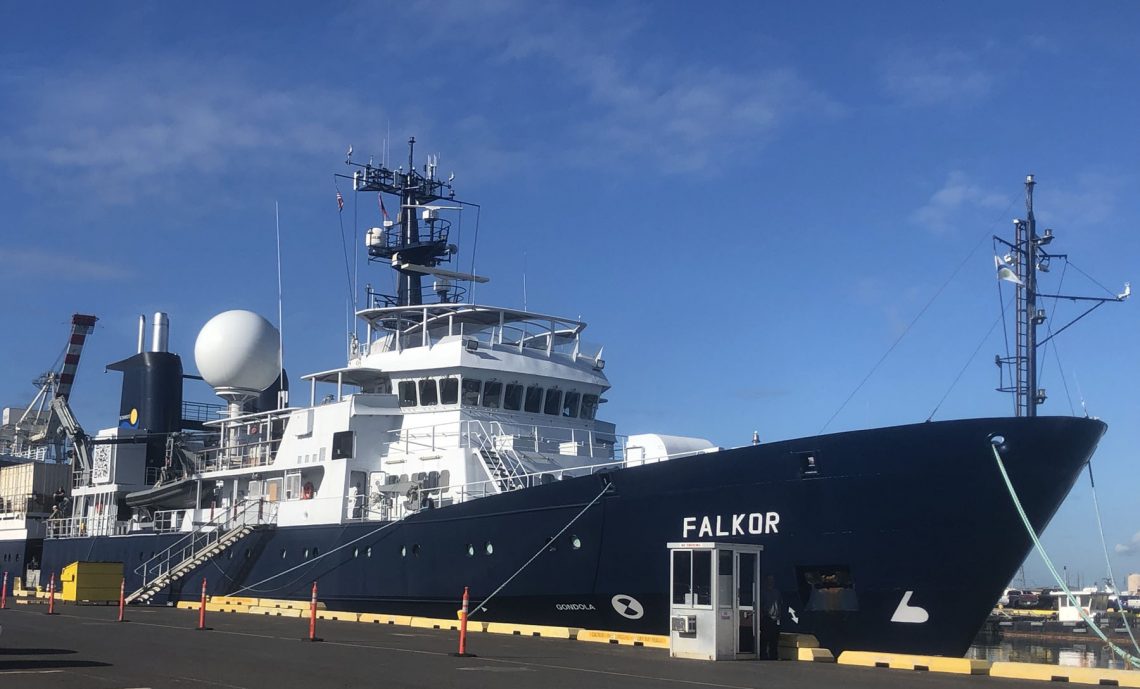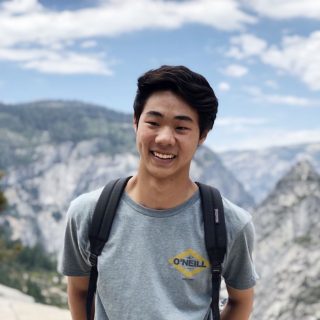14 November 2019 marks the bittersweet conclusion to my journey on board the Research Vessel Falkor. As we continue to approach the final destination of our 2,745 nautical mile transit, I am both grateful and overjoyed to have been able to gain the full experience of living life at sea, and I am sad to have to leave. It takes an amazing and capable crew to operate and maintain a vessel like the Falkor – I am forever appreciative of everyone on board that made this journey possible.

Behind the Scenes
I had the opportunity to speak with this transit’s chief scientists Matthew Church and his supervisor Sam Wilson (a professor at the University of Hawaii at Manoa). They are in the midst of testing and developing a new, autonomous instrument to measure the rate of nitrogen fixation in the water column along/near the equator. Although not as thoroughly taught in school, the nitrogen cycle is still just as important to understand as any other cycle in an environment such as photosynthesis and the carbon cycle. Nitrogen is an important element and is essential for living things to perform various tasks like growth and energy/food production. The nitrogen cycle, then, is necessary for converting nitrogen in the air into usable forms for other organisms to take up and use. For example, most plants cannot directly take nitrogen gas (N2) from the atmosphere, they must use the ammonium (NH3) found in their soil.
Nitrogen is More Important Than You Think
The nitrogen cycle also tells us the rate at which vital nutrients such as ammonium are produced. This can be used to determine how environmentally rich or poor a particular habitat/area is. Eutrophic regions are defined as a nutrient-rich area and can, therefore, support an abundance of wildlife. More nutrients lead to more plant growth which eventually gives rise to a variety of animals and a biodiverse ecosystem. Oligotrophic regions, however, are nutrient-poor and not as supportive in diverse ecosystems.

Matthew and Sam hope to build a fully functional, self-operating machine that traces the amount of hydrogen consumed in a closed-loop* system with different species of algae (closed-loop: No gas cannot escape and new gas cannot enter. There are only changes in what is already present inside the loop/container). Some species of algae located near the equator are able to fixate their own ammonium (NH3). Therefore, we can calculate the rate of nitrogen fixation through the amount of hydrogen gas (H2) consumed, or lost in the closed-loop. They used this cruise as a test run to discover what can be improved and what adjustments they might have to make that they had not considered before. One problem that we kept running into during this trip was the physical characteristics of hydrogen gas. Hydrogen gas is a very light gas, only consisting of two hydrogen atoms. Consequently, unlike most gasses, hydrogen gas has a tendency to escape the closed-loop from seals that are not extremely airtight. From my point of view, the instrument they are working on is well thought-out and can be fully operational within the next year. The advantages of having this instrument are well worth the effort and can possibly transform the way we look at our environment. I cannot wait to read more about their efforts in the future and I hope to see it on a later cruise.

Conclusion
My experience on the R/V Falkor is one that I will never forget. From the people I have met to the many new things I have learned, I know that my time on Falkor was well worth it. I am a bit sad to leave the Falkor and head back to school, but I cannot wait to share the stories and adventures I had made and inspire others along the way.


